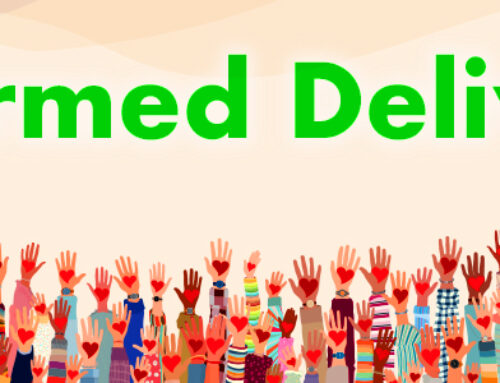The single biggest problem in communication is the illusion that it has taken place.
At one time or another, who among us hasn’t found that to be true? Attributed to George Bernard Shaw, the great Irish playwright, dramatist and critic of the early 20th century, this simple observation is an ever-present challenge. We speak. Is anyone listening? We write. Will anyone read? And perhaps more importantly, will our audience—for us, our customers or prospects—“hear” what we hope to convey?
Communication is an intriguing challenge, as much today as in centuries past. And while today, ever-evolving technologies and resources let us share words and images at the speed of light, the meaning can still be missed. It can get balled up in the cacophony of messages competing for our attention or tangled in the misunderstood intent of the words of choice. So, how do we get our message heard, read, understood—and best case, all of the above?
Keep it simple—especially the words
Often at EdgeMark we’re called upon to help clients communicate complex messages simply—to break down a complicated situation into digestible bites that help their customers hear, understand and embrace something new. A financial services client, for example, may need to inform and reassure customers about upcoming events such as mergers, branch closings, and account modifications. These communications must guide new or existing customers through times of change. And there it is: change—that thing that no one likes.
While change communications present unique challenges, the way to “land” your message with your intended audience is to follow two simple guidelines: Write simply and clearly. And write what you know.
Protect the customer experience
Think about the merger of two financial services companies. The announcement represents a major change, one that can raise many questions and concerns for customers of the to-be-acquired bank. Customers may need to take steps concerning their accounts. Perhaps new debit cards will arrive and old cards must be destroyed. New checks may need to be ordered, new account numbers provided to continue automatic payments—or there may be little action required at all. Either way, considerable information must be shared, both for regulatory and retention reasons, and the success of the conversion will rely in part on how well the new customers “hear” and act on the news.
When developing copy for change situations, put yourself in the customer’s shoes. What would you want to know? What apprehensions would you have? How would your life be impacted? Anticipate those questions and share the answers—simply, honestly, concisely and in the voice of your client’s brand. Ask questions, understand how each change will affect the customer, and write clearly to share expectations and next steps. You’ll be easing tension and building trust.
Write to be read
Let’s think about that merger situation again. Financial services merger communications are driven by regulatory guidelines and requirements. And, as we all know, “legal jargon” is hardly warm and fuzzy. That presents us with the challenge of making legally mandated content resonate with the customer—taking complex content and instructions and making them easy to digest. Here’s a few ways to do this…
- Use informal, conversational language that avoids confusing jargon
- “Speak” in a friendly, personable tone
- Break up detailed information into smaller chunks, using brief paragraphs or bulleted lists
- Use subheads, bold fonts, illustrative visuals and other techniques to make benefits and highlights stand out in a quick scan of the communication, encouraging the reader to dig in for details
While speaking conversationally can be a challenge when communicating legally mandated information, it can be done. Coordinating closely with both the legal/compliance and marketing/communications teams, we work to understand the intent of legally directed content and write it as simply and clearly as possible. In the end, communicating clearly is everyone’s goal.
Times of change can be challenging—but they can also be an opportunity to build trust and improve customer relationships. The more clearly and completely the message is communicated, the better the customer experience and the smoother the transition—the ultimate proof that communication has, in fact, taken place.



